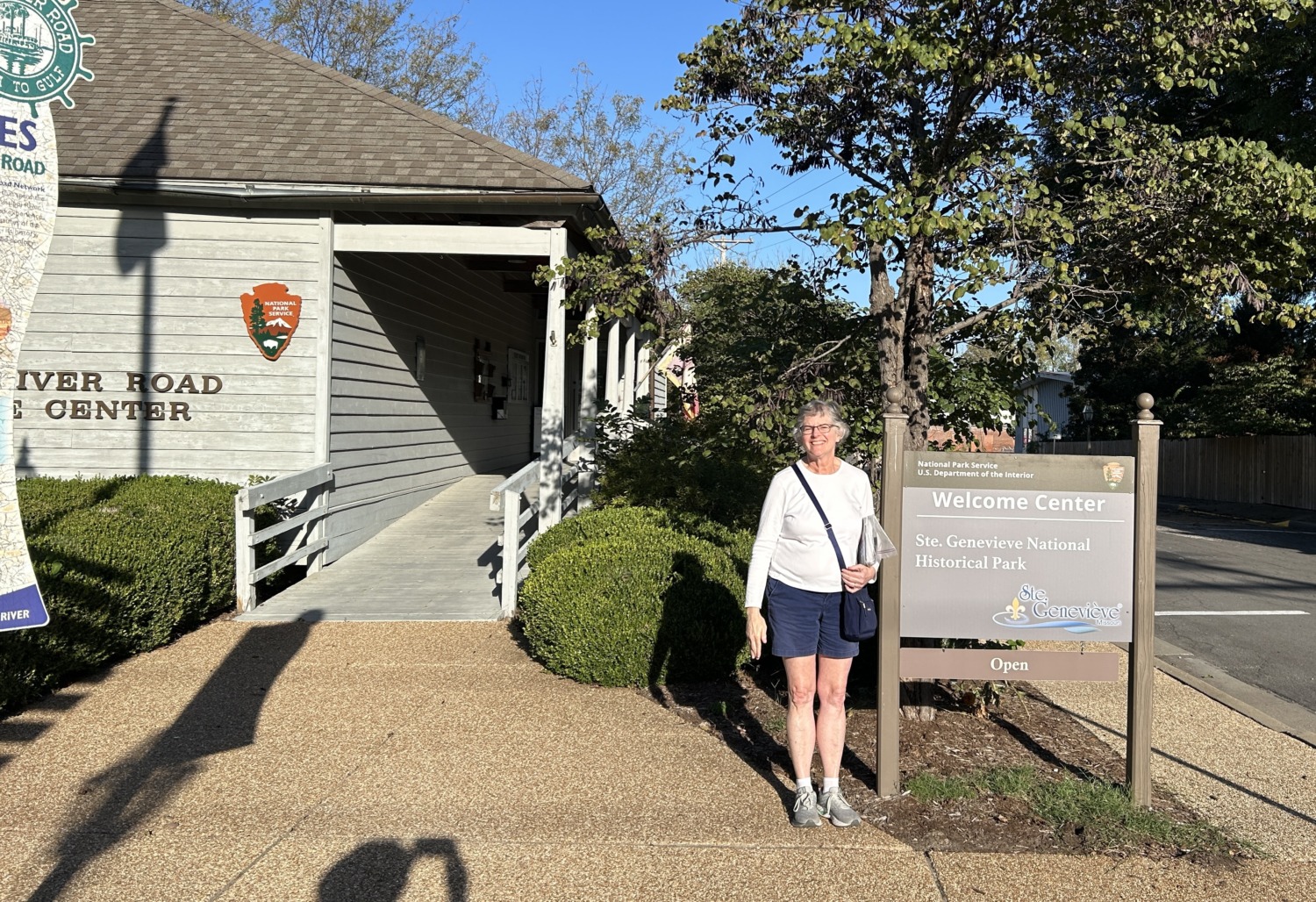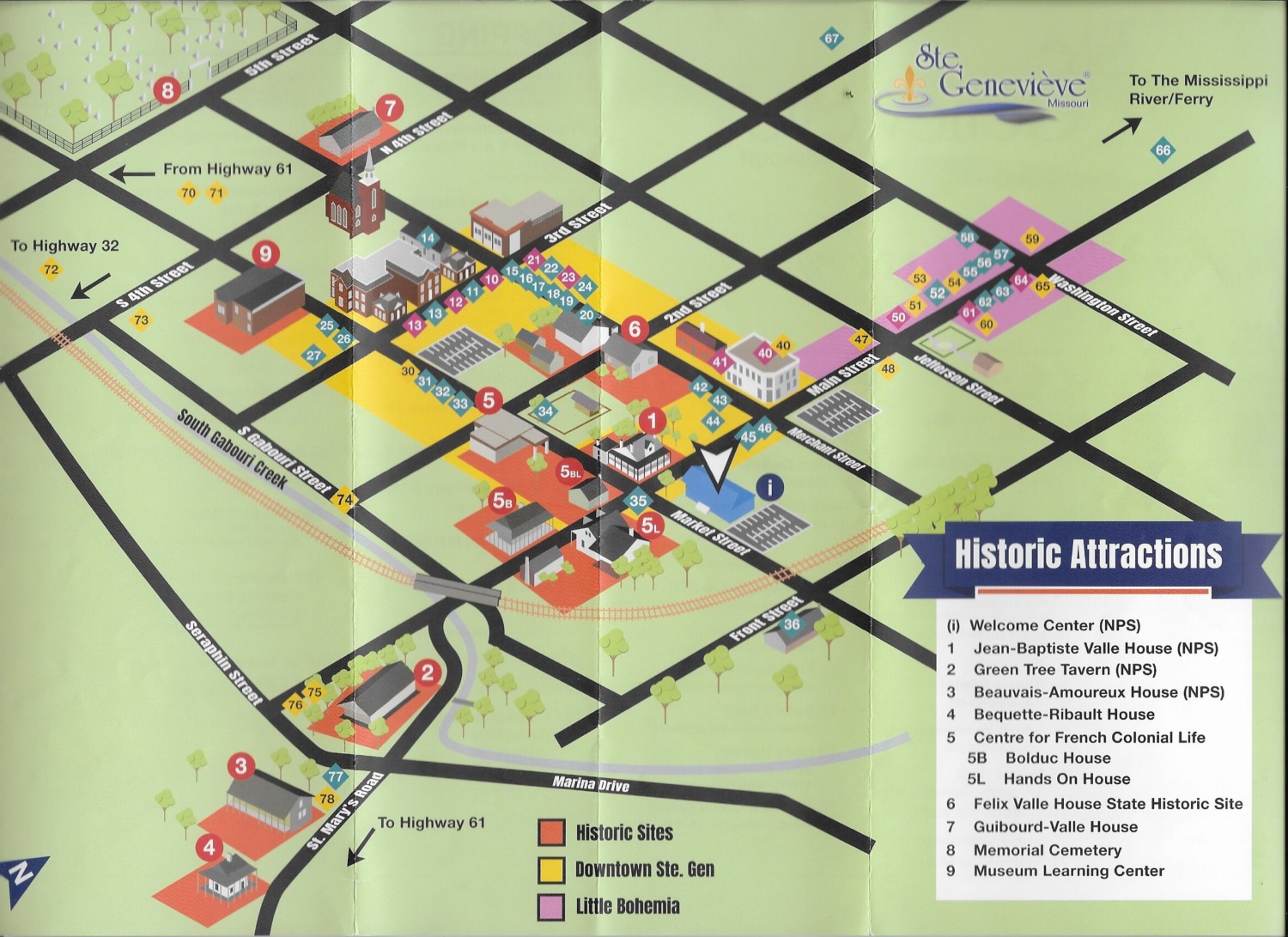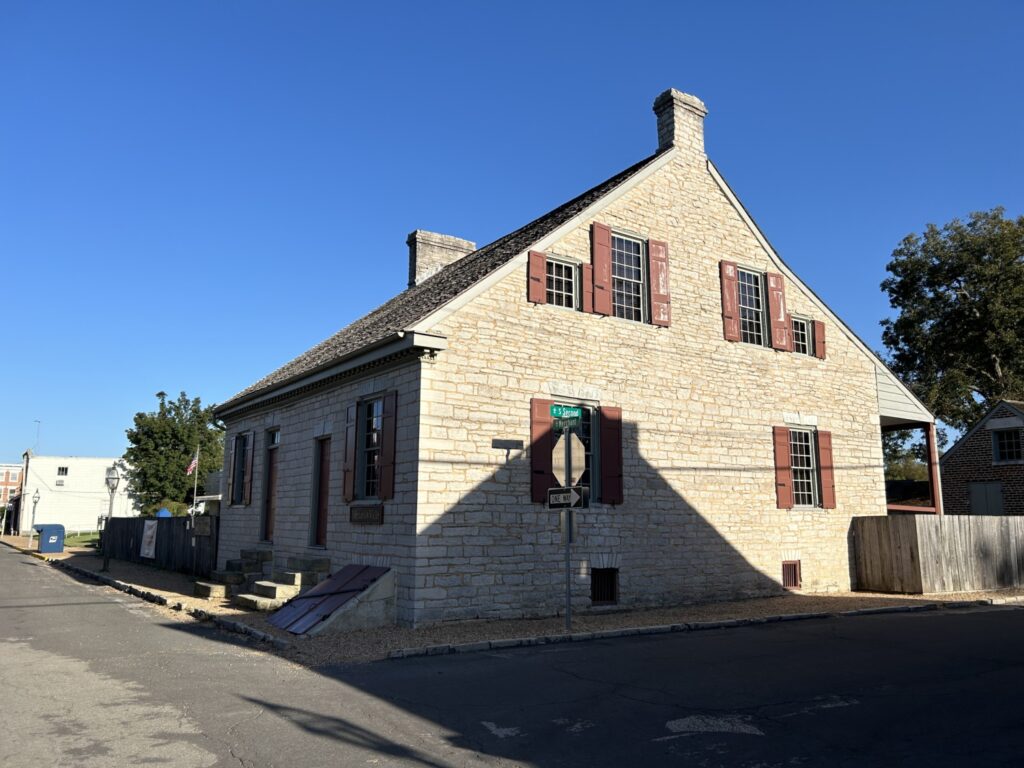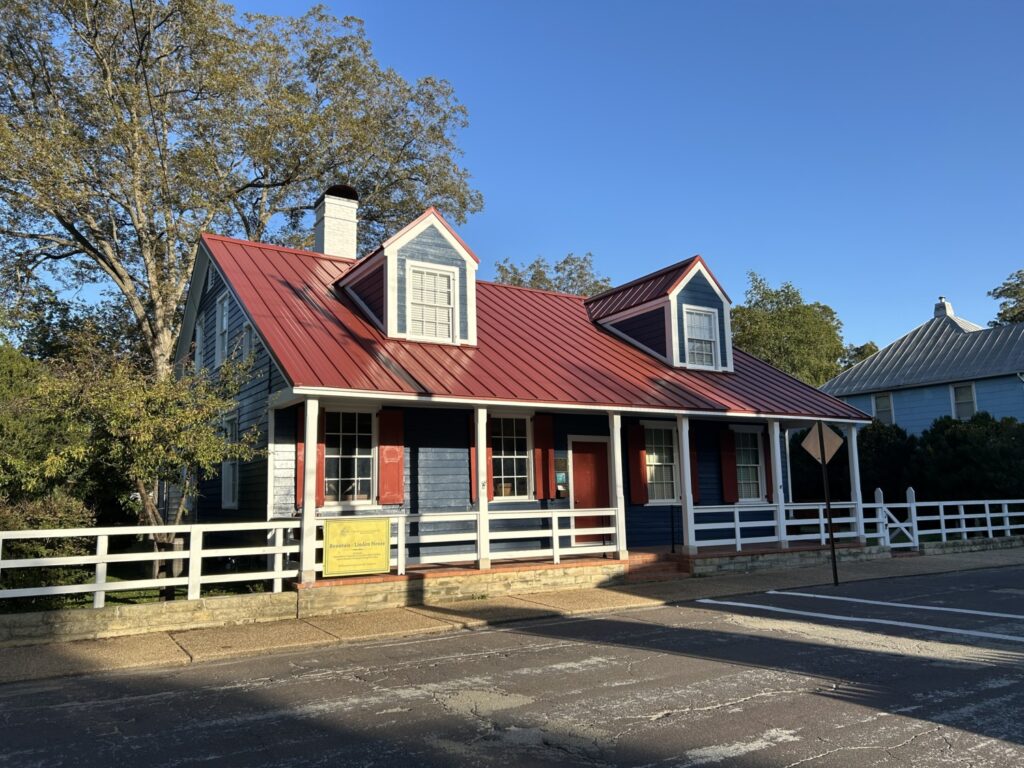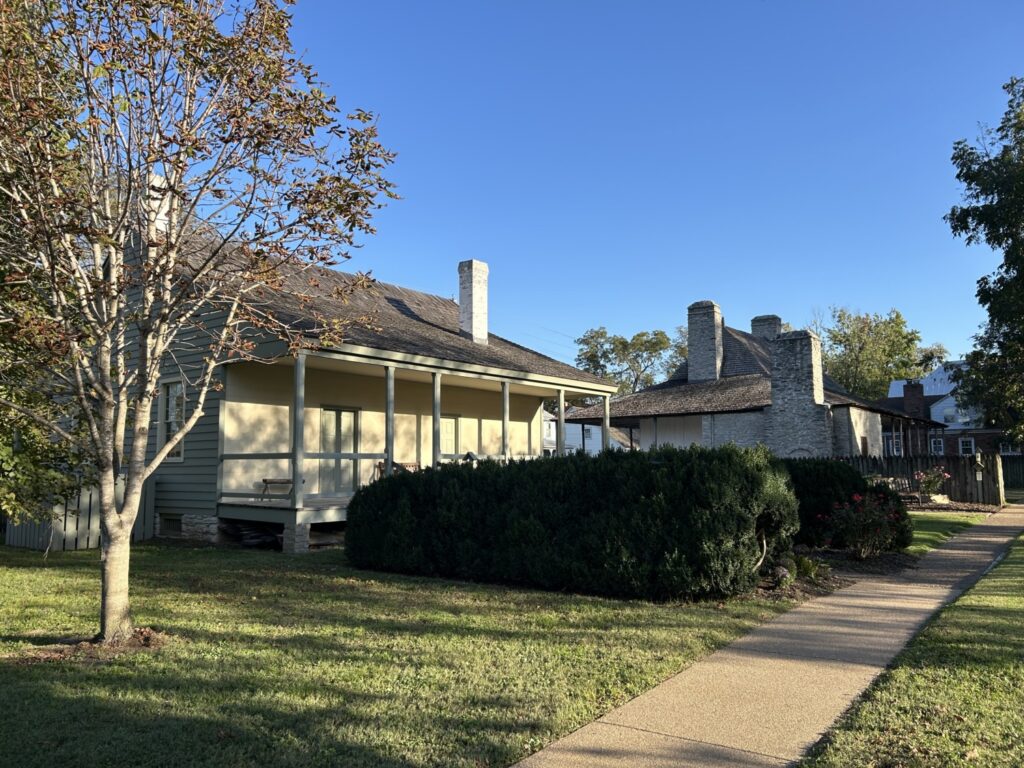St Genevieve National Historical Park is one of the newer national park sites, established in 2018. It is located just down the Mississippi River from St. Louis, so Tom and I decided to check it out. It was not our intention to see it on the same day as Lincoln’s Home, Gateway Arch, and Ulysses S. Grant. But we had time to stop by the Visitors Center and get the information we would need to return to the park the next day.
Established by 1750, St Genevieve was the first permanent European settlement in Missouri. Early French Canadian settlers were drawn here by the rich agricultural land known as Le Grand Champ (the Big Field). After the flood of 1785, the town relocated to its present location on higher ground approximately three miles to the northwest of its original site. The town served as the capital of French Louisiana from 1755-1763 and, subsequently, the capital of Spanish Louisiana from 1763 until 1803.
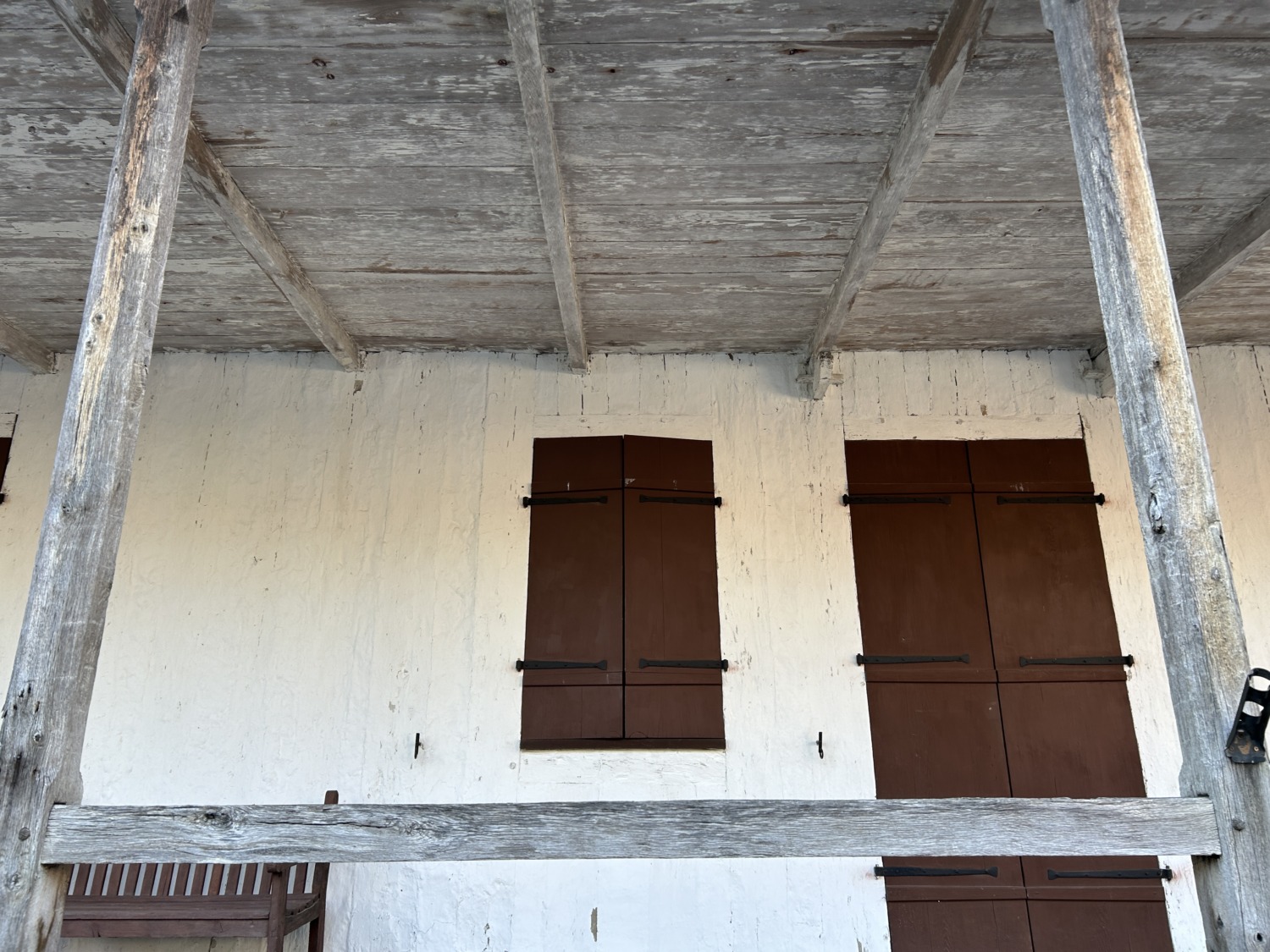
St Genevieve is home to one of the highest concentrations of distinctive types of French colonial architecture known as post in ground, and post on sill. Both of these styles involve construction of walls with vertical logs, the former placed directly into the ground, and the latter onto a horizontal sill of wood or stone. This unique architecture was recognized when St Genevieve was designated a National Historic Landmark District in 1960. A smaller group of houses were recognized on the National Register of Historic Places in 2002. When the area became a National Historical Park in 2018, a Visitors Center was built and the National park Service started giving tours of some of the historic houses.
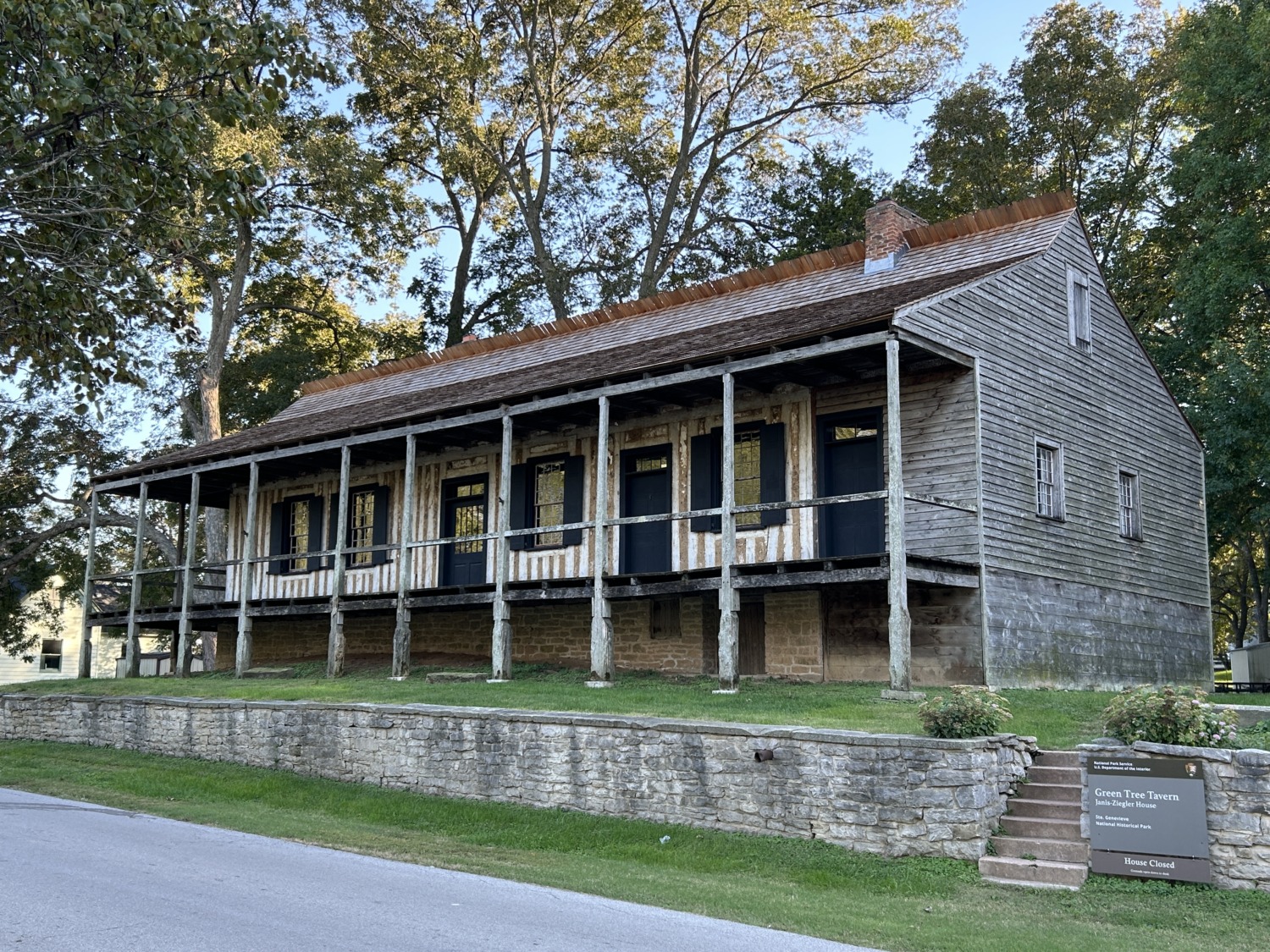
Tom and I made it to the St Genevieve National Historical Park Visitors Center about 4:15, 45 minutes before closing. We had time to talk to a ranger and get a map of the historic buildings in the park. In talking to the ranger, we found out that only one of the buildings is open for tours through NPS. A couple of other buildings are open for tours through the Centre for French Colonial Life. The Centre is also responsible for much of the historic interpretation and does living history programs through the year.
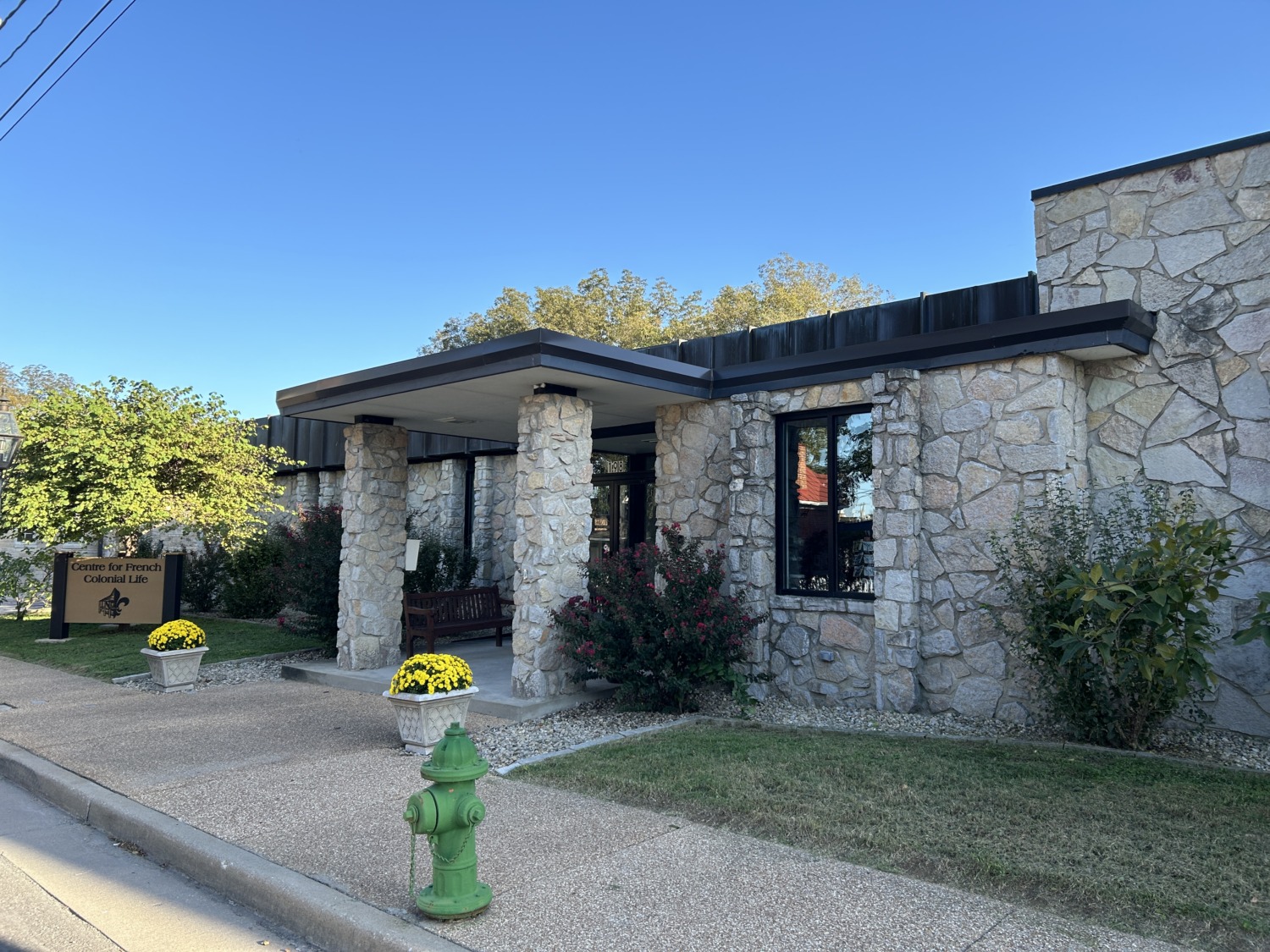
Tom and I watched the movie and then decided, instead of coming back the next day, to walk around town and see the historic buildings from the outside. We also thought St Genevieve looked like a nice small town to get supper and maybe do some shopping. We used the map provided by the NPS to find the historic buildings in town.
It didn’t take very long to walk around the small town. We found all the historic homes. None of them were open after 5 p.m. We also saw several shops, diners and cafes. None of them were open after 5 p.m. In fact, the only thing we found that was open after 5 p.m. were a couple of bars. As we were walking along the sidewalk, a man stopped his truck to tell us that his cafe closed at 4 p.m. if we wanted to come back tomorrow. I guess we really stood out as tourists with the map in hand.
By 6 p.m., Tom and I had walked around the entire town and seen everything we could think of to see. We were getting hungry and there weren’t any places to eat close by. So, we decided to hit the road.
St Genevieve National Historical Park was interesting. We didn’t know about the post in ground or post on sill styles of architecture, but we noticed it as we looked at the historic buildings. It didn’t take long to see and it is in a beautiful part of Missouri along the Mississippi River. If you are in the area, it is worth a visit.

